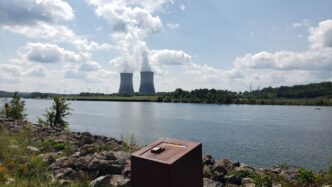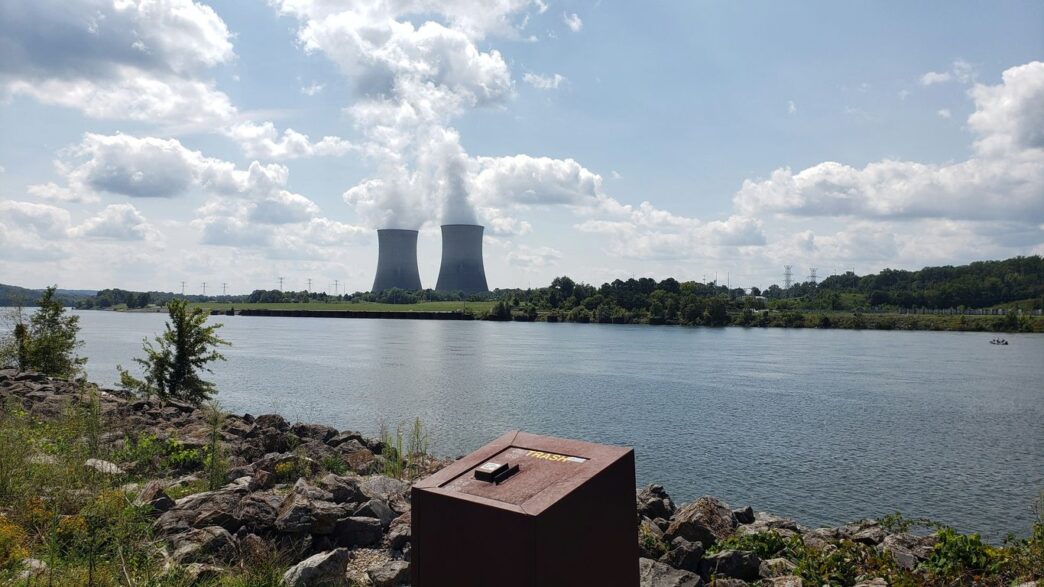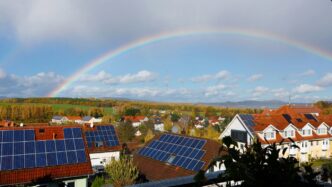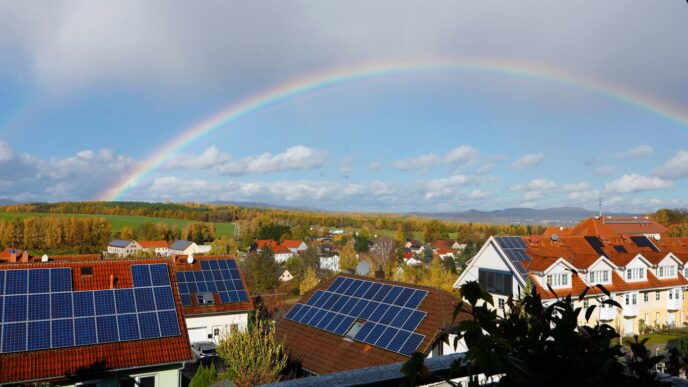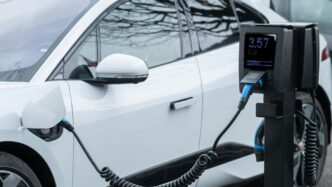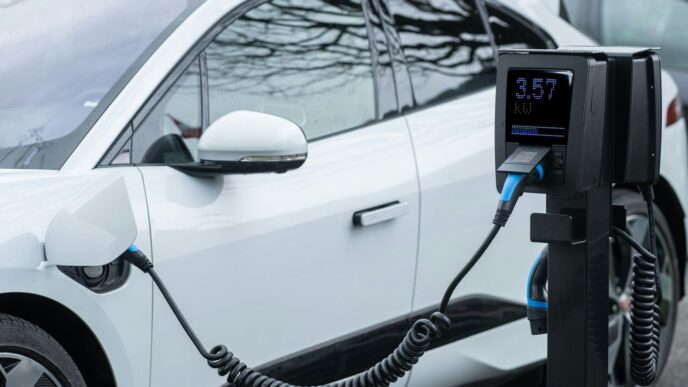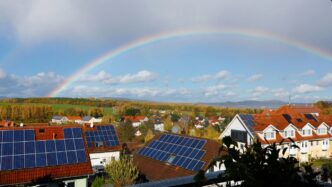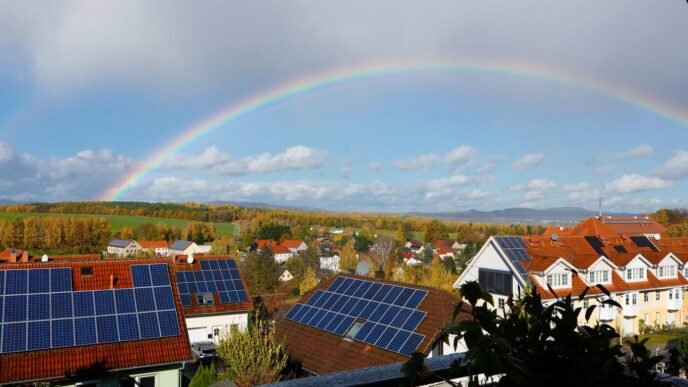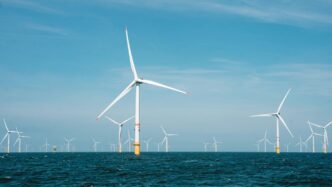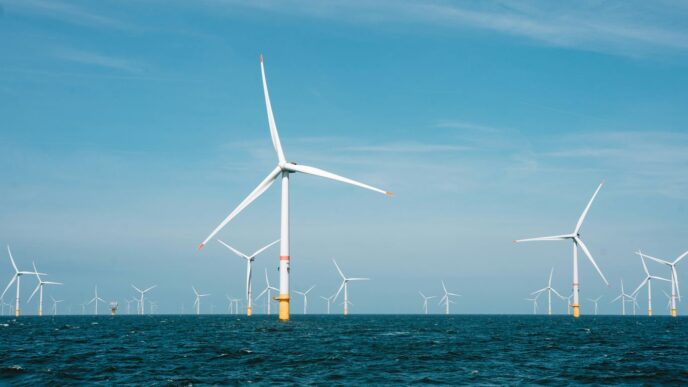New Jersey is looking at its energy future, and nuclear power plants NJ are a big part of that conversation. The state has some existing nuclear facilities that provide a good chunk of our electricity, especially the clean kind. But with goals to go 100% clean, they’re also wondering if adding more nuclear power makes sense. This article explores what we have now, what we might do in the future, and what it all means for us.
Key Takeaways
- New Jersey currently relies on its nuclear power plants, like Salem and Hope Creek, for a significant portion of its electricity, making them a major source of emission-free power for the state.
- The state has set ambitious clean energy goals, aiming for 100% clean electricity sales by 2035, and nuclear energy is being considered as a way to meet these targets and future energy demands.
- New Jersey is actively exploring the possibility of new nuclear generation capacity, seeking information on how it could meet large energy needs, like those from data centers, and what incentives might be appropriate.
- The economic and environmental impacts of nuclear power, including effects on electricity rates for consumers and the broader environmental benefits and considerations, are being weighed as part of the decision-making process.
- Expanding the nuclear fleet is being discussed as a way to ensure long-term energy reliability and affordability, especially for meeting large-scale energy requirements in the Garden State.
Current Nuclear Power Landscape in New Jersey
New Jersey’s electricity mix is heavily reliant on a few key sources, and nuclear power plays a significant part. For years, natural gas and nuclear energy have been the workhorses, powering over 90% of the state’s electricity. In 2023, for instance, natural gas covered about 49% of the demand, while nuclear power stepped in to provide a substantial 42%. This reliance has been pretty consistent since 2011, showing just how important these two energy types are for keeping the lights on across the Garden State.
Existing Nuclear Facilities and Capacity
Right now, New Jersey has three operational nuclear reactors spread across two power plants. These are the Salem 1 and 2 units, which together have a capacity of 2,285 megawatts (MW), and the Hope Creek unit, adding another 1,172 MW. PSEG Power operates the Hope Creek plant and holds a majority stake in Salem, with Constellation Energy owning the rest. These facilities are the backbone of the state’s emission-free electricity generation.
Contribution to State Electricity Generation
Collectively, these nuclear reactors are responsible for generating about 40% of New Jersey’s total electricity. This is a huge chunk, especially when you consider the state’s overall energy needs. It’s worth noting that nuclear’s contribution has seen some shifts; the Oyster Creek plant, once the oldest operating nuclear reactor in the country, shut down in 2018. Following that closure, the state provided financial backing to keep the remaining three reactors running, highlighting their importance.
Role in Emission-Free Power
When we talk about clean energy, nuclear power really shines. It accounts for roughly 85% of New Jersey’s emission-free electricity generation. This is a big deal for the state’s environmental goals, as it provides a steady stream of power without contributing to greenhouse gas emissions. While renewables like solar are growing, nuclear remains a major player in keeping the state’s carbon footprint low.
New Jersey’s Clean Energy Goals and Nuclear’s Role
New Jersey has set some pretty ambitious targets for its energy future. The state is aiming for 100% clean electricity sales by 2035, a goal that’s part of a larger push to clean up how we power our lives. This isn’t just a casual wish; it’s a mandate that shapes how the state looks at all its energy sources.
When you look at the numbers, nuclear power already plays a big part in New Jersey’s energy mix. In 2023, for instance, nuclear energy provided a solid 42% of the state’s electricity generation. That’s a huge chunk, especially when you consider it alongside natural gas, which made up 49%. Together, these two sources have been the backbone of the state’s power for years.
State Mandate for 100% Clean Electricity
Governor Murphy signed an executive order back in February 2023, setting the stage for New Jersey to hit 100% clean electricity sales by 2035. This means that by that year, all electricity sold in the state needs to come from sources that don’t produce greenhouse gas emissions. It’s a big deal, and it means a lot of planning and changes are needed across the board.
Nuclear’s Alignment with Energy Master Plan
So, where does nuclear fit into all this? Well, it’s actually a key player. The state’s Energy Master Plan, which is still being developed, is looking at needing about 10 gigawatts of clean, reliable power after 2035. This need is partly driven by things like the growing demand from data centers. Nuclear power, being a source of firm, emission-free energy, fits right into this picture. It’s seen as a way to help meet these future demands without adding to carbon emissions.
Addressing Future Energy Demands
Looking ahead, New Jersey is going to need a lot more power, and it needs to be clean. The state is actively exploring options, and that includes looking into new nuclear generation. The Board of Public Utilities (BPU) even put out a request for information in May 2025 to get input from everyone on how new nuclear plants could help meet these goals. They’re asking about everything from how nuclear can handle big energy users like data centers to what kind of incentives might be needed to build new facilities.
It’s clear that as New Jersey pushes towards its clean energy future, nuclear power is on the table as a significant contributor. The state is trying to figure out the best way to use existing nuclear assets and whether new ones make sense, all while keeping an eye on affordability and reliability for everyone.
Exploring New Nuclear Generation Opportunities
New Jersey is looking into ways to bring more nuclear power online. It’s not just about keeping the lights on; it’s about meeting future energy needs, especially with the rise of things like AI data centers that need a ton of power. The state’s Board of Public Utilities (BPU) put out a request for information (RFI) to see what the market thinks about adding new nuclear capacity. They’re asking all sorts of questions, like how nuclear can handle these big energy demands and how to make sure regular folks aren’t stuck with higher bills because of it. They also want to know what kind of incentives might make sense to encourage new nuclear projects while still looking out for consumers.
It’s a complex puzzle, trying to balance clean energy goals with practical realities. The RFI is a big step in figuring out if and how new nuclear plants could fit into New Jersey’s energy future. They’re also asking about the environmental pluses and minuses, which is pretty important when you’re talking about nuclear energy.
Here’s a look at what the BPU is trying to figure out:
- How can new nuclear power help meet the energy needs of large-scale operations, such as AI data centers?
- What measures should be in place to protect consumers from potential cost impacts related to nuclear plant usage?
- Should the state offer financial help or other incentives for new nuclear power generation?
- How can any incentive programs be designed to benefit the state’s economy without unfairly burdening ratepayers?
- What environmental benefits and drawbacks need to be considered when thinking about new nuclear capacity?
This exploration isn’t happening in a vacuum. Other states are also looking at advanced nuclear technologies. For instance, New York has been active, with initiatives like the "Advanced Nuclear Technologies Request for Information" and a "Blueprint for Consideration of Advanced Nuclear Technologies." They’re also part of the "NASEO Advanced Nuclear First Movers Initiative," which is a multi-state effort to get advanced nuclear projects moving by looking at financial risks, market policies, and supply chains. New Jersey’s RFI is part of this broader conversation about how nuclear power can play a role in a clean energy future.
Economic and Environmental Considerations for Nuclear Power
When we talk about nuclear power in New Jersey, it’s not just about watts and grids. There are real-world costs and environmental impacts to think about, both good and maybe not-so-good. It’s a complex picture, for sure.
Impact on Ratepayers and Affordability
One of the big questions is how nuclear power affects what we pay for electricity. Right now, New Jersey’s existing nuclear plants provide a significant chunk of our power, about 40%, and a huge amount of our emission-free electricity. This existing capacity can help keep costs down because, once built, the fuel costs are relatively low compared to fossil fuels. However, building new nuclear facilities is a massive undertaking with huge upfront costs. There’s a lot of discussion about whether these costs will be passed on to us, the consumers, and how to make sure that doesn’t lead to unaffordable energy bills. The state is actively asking how to structure any new nuclear development to protect ratepayers. It’s a balancing act between having reliable power and keeping it affordable.
Environmental Benefits and Considerations
On the environmental front, nuclear power has a major plus: it doesn’t produce greenhouse gases during operation. This is a big deal when you consider New Jersey’s goals for clean energy. Compared to burning coal or gas, nuclear is way cleaner in terms of air pollution and carbon emissions. For example, nuclear power’s carbon footprint is much smaller than solar or even hydropower. But, of course, there are other environmental aspects. We have to think about managing nuclear waste, which is a long-term challenge, and the safety of the plants themselves. The state is looking into what environmental impacts and benefits should be weighed when considering new nuclear capacity. It’s not just about zero emissions; it’s about the whole lifecycle and managing any potential risks.
Protecting Consumers from Nuclear Plant Usage
This part is a bit newer, especially with the idea of using nuclear power for things like large data centers. The state is asking some pointed questions about how to make sure consumers aren’t negatively impacted if nuclear plants are used for these new, large energy demands. For instance, if a plant is dedicated to powering a massive data center, how does that affect the availability and cost of electricity for regular homes and businesses? There’s a need for clear rules and oversight to prevent situations where the needs of large industrial users might come at the expense of everyday consumers. It’s all about making sure the benefits of nuclear power are shared fairly and that no one gets left paying more than they should.
The Future of Nuclear Energy in the Garden State
So, what’s next for nuclear power in New Jersey? It’s a big question, especially with the state aiming for 100% clean electricity by 2035. Right now, nuclear energy is a huge part of that picture, providing a solid chunk of our power and almost all of our emission-free electricity. But the state is looking at more than just keeping the lights on.
Expanding the Nuclear Fleet for Reliability
New Jersey’s energy planners are thinking about how to keep the grid stable and affordable, especially as demand grows. They’ve put out a call, a Request for Information (RFI), to see if building new nuclear capacity makes sense. This isn’t just about adding more power; it’s about adding reliable power. Think about those big, new energy demands, like AI data centers – they need a constant, steady supply of electricity, and nuclear can offer that. The state is asking all sorts of questions about how this could work, including how to make sure regular folks aren’t footing the bill for these new projects.
Nuclear Power for Large Load Needs
As mentioned, the state is really looking at how nuclear can handle the increasing energy needs of things like data centers. These facilities require a massive amount of electricity, 24/7. Nuclear power plants, with their high capacity factors, are well-suited to meet these large, consistent demands. The RFI is specifically asking for input on how nuclear generation can address these large load requirements and what protections are needed for consumers.
Long-Term Affordability and Generation
Ultimately, the conversation comes down to long-term affordability and generation. New Jersey is exploring whether financial help or incentives should be offered for new nuclear projects. The goal is to figure out how any incentive programs could boost the state’s economy without hurting ratepayers. It’s a balancing act, for sure. They’re weighing the environmental benefits and considerations against the costs and practicalities. The state is actively seeking information to understand the full picture before making any big decisions about expanding its nuclear fleet.
Here’s a quick look at New Jersey’s current nuclear capacity:
| Facility | Number of Reactors | Total Capacity (MW) | Contribution to State Emission-Free Generation |
|---|---|---|---|
| Salem | 2 | 2,285 | Part of 85% |
| Hope Creek | 1 | 1,172 | Part of 85% |
This information is part of a broader effort to understand all the options for meeting New Jersey’s clean energy future.
Wrapping Up: What’s Next for Nuclear Power in New Jersey?
So, where does all this leave us regarding nuclear power in New Jersey? It’s clear the state is looking at it pretty seriously. Right now, the existing plants at Salem and Hope Creek are doing a big chunk of the work, providing a lot of electricity and most of the clean power we use. The state’s Board of Public Utilities is even asking folks for ideas on how new nuclear plants could fit into the picture, especially with the growing demand from things like data centers and the overall goal of having 100% clean electricity by 2035. It’s not a simple topic, and there are a lot of questions about costs, safety, and how it all works with other energy sources. But it seems like New Jersey is keeping its options open and exploring what role nuclear might play in its energy future, alongside other clean energy efforts.

